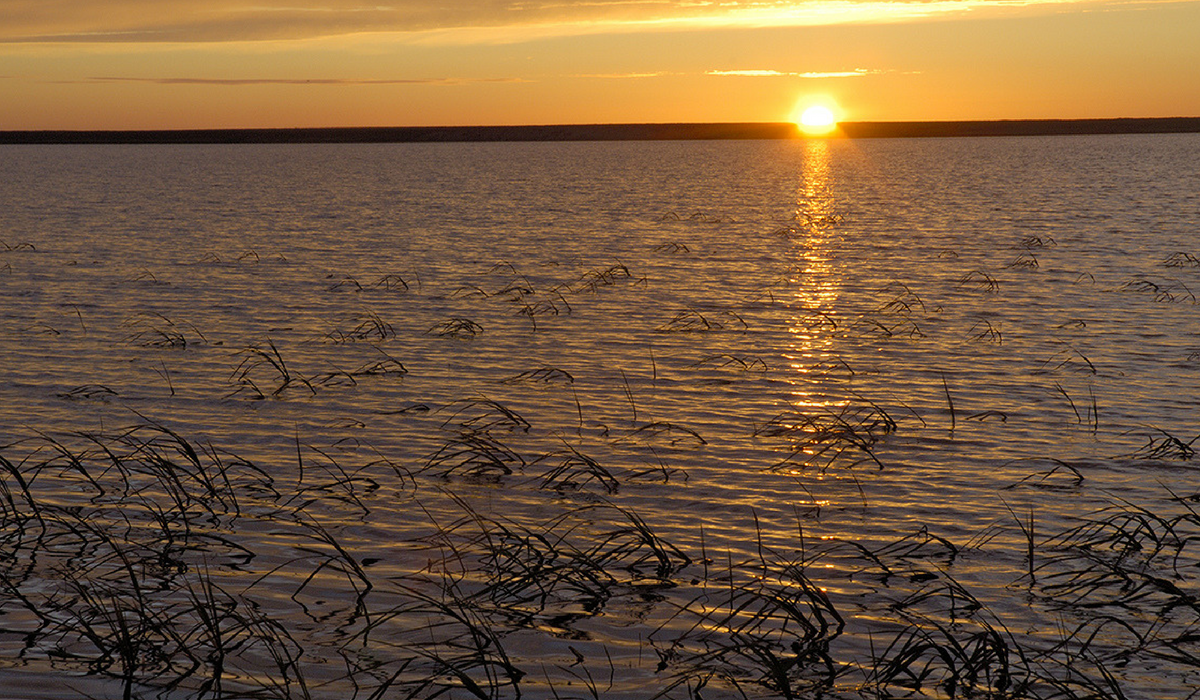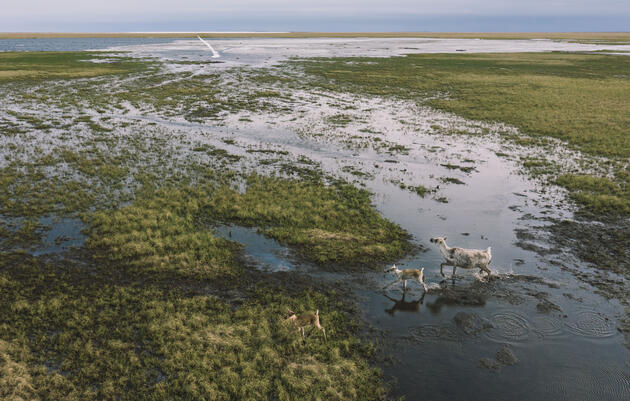Teshekpuk Lake, located on Alaska’s North Slope, teems with birds in the spring and summer and is one of the most ecologically important wetlands in the entire Arctic. Part of the National Petroleum Reserve-Alaska (NPR-A), this sensitive area provides habitat for tens of thousands of molting geese, threatened species such as the Spectacled Eider, nesting shorebirds and waterfowl galore, and the 40,000-head Teshekpuk Caribou Herd.
Fortunately, the area around Teshekpuk Lake has been spared from oil and gas development for the past 40 years. For decades, multiple Secretaries of the Interior have recognized the necessity of balancing development and conservation in the NPR-A and have prohibited oil and gas leasing in this most critical habitat. But, with the recent announcement of higher oil estimates near Teshekpuk Lake, a new spotlight has been placed on this globally important wetlands complex.
Importance to Birds
The Teshekpuk Lake area is one of the most important goose molting habitats in the circumpolar Arctic. When geese molt, they replace old, worn flight feathers, becoming flightless and vulnerable to predators and human disturbance. The areas north and east of Teshekpuk Lake provide ideal conditions for molting geese: a remote location that’s free of development, large lakes where flightless birds can escape from predators, and tender sedges to fuel their high energy demands. It is no accident that geese gather annually near Teshekpuk Lake by the tens of thousands; as many as 35,000 Greater White-fronted Geese and 37,000 Brant molt at Teshekpuk Lake, plus thousands of Canada Geese and Snow Geese.
The geese are not alone. More than a dozen Alaska WatchList species nest, molt, or rest near Teshekpuk Lake, including threatened Spectacled Eiders, King Eiders, Red-throated Loons, Dunlins, and Buff-breasted Sandpipers. Of special concern is the Yellow-billed Loon, which nests on deep, fish-bearing lakes in the area and has been considered for listing under the Endangered Species Act. The Teshekpuk Lake area is also one of the most important shorebird sites in the entire international Arctic, and a portion of this area was recently designated as the Qupaluk Flyway Network Site for the East Asian-Australasian Flyway Partnership.
Management of Teshekpuk Lake
The current area-wide management plan for the National Petroleum Reserve-Alaska places several designated Special Areas, such as the Teshekpuk Lake Special Area, off-limits for oil and gas leasing. This plan provides a responsible balance that protects ecologically sensitive areas while still allowing energy development to occur in less sensitive areas.
Related
What’s So Special About Alaska’s Special Areas?
And actually, what are Special Areas? Here’s the history of these life-giving zones in Alaska’s Western Arctic, and how Audubon Alaska staff helped to protect some of the most unique places on the planet.
What's Going on in the Arctic?
Here's a breakdown of the historic actions the Biden administration and Department of the Interior made about America’s Arctic—and what work to further protections still needs to be done.
On The Wire
Follow along for solutions-based, Alaska-focused bird and conservation news.
How you can help, right now
Donate to Audubon
Help secure the future for birds at risk from climate change, habitat loss and other threats. Your support will power our science, education, advocacy and on-the-ground conservation efforts.
1% for the Planet
We are proud to be part of the 1% for the Planet network. If you own a business, please consider joining 1% for the Planet to support Audubon Alaska’s conservation efforts.







